How One Remarkable German School Shaped Design
Bauhaus has become almost synonymous with modern design, and for good reason.
Photography and written by Lee Mindel, FAIA
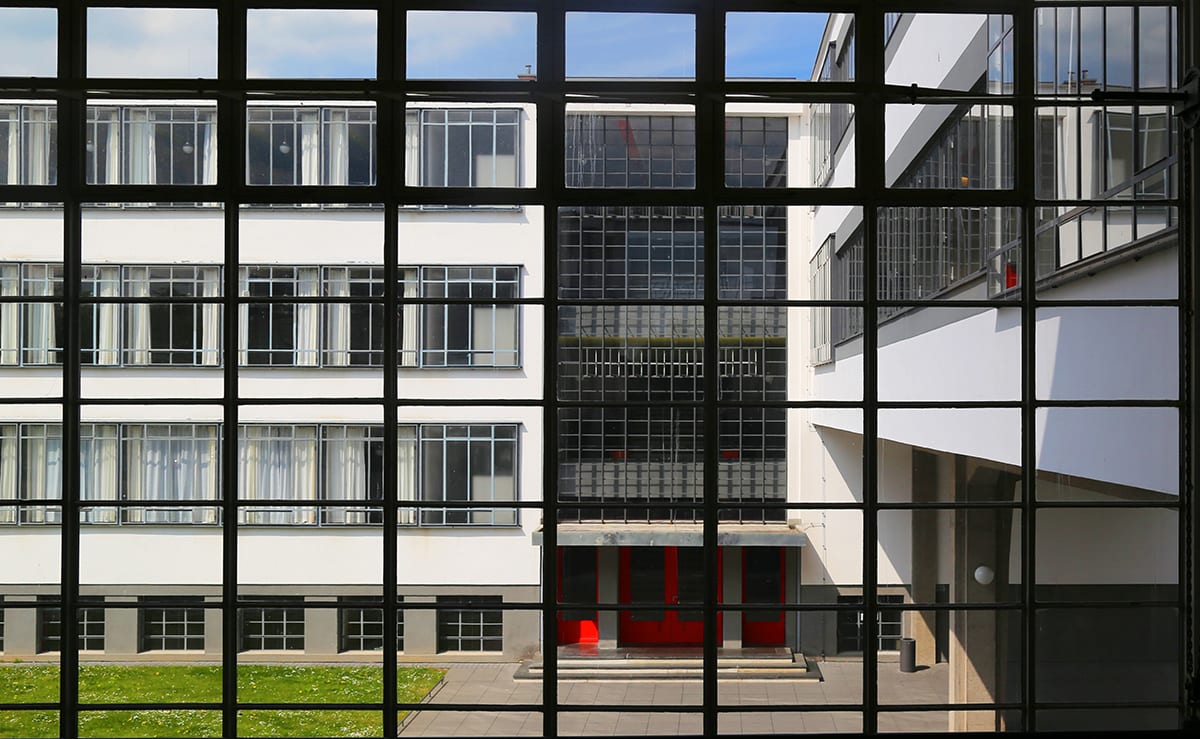
Looking through the windows of the Bauhaus School in Dessau, Germany, designed by Walter Gropius. Photograph by Lee Mindel
German architect Walter Gropius founded the Bauhaus School in 1919 with the intention of uniting art, craft, and technology to reimagine the material world. The school’s influence is the throughline that connects all modern design.

The iconic exterior of the Bauhaus School, with its sign in sans serif type. Typography was a course of study at the Bauhaus, where the use of simplified geometric forms in all things was encouraged. Photograph by Lee Mindel

Left: With its sleek metal frame and woven leather seat, the GT Arm Chair by Mark Albrecht Studio has the architectural lines and materiality befitting of the most iconic modern furniture pieces. Through Holly Hunt.
Right: An abstract painting from the Townscapes series by Gerhard Richter, who studied at Bauhaus, mimics the geometry of the style.
Bauhaus has become almost synonymous with modern design, and for good reason. Founded in 1919 by Walter Gropius in Weimar, Germany, the Bauhaus school, which was in operation for 14 years, was the most influential design school of the 20th century. Gropius’s intent was to reimagine the material world by integrating all the arts. The guiding principle of combining architecture, furniture design, and typography with new technologies was, in his words, “that design is neither an intellectual nor a material affair, but simply an integral part of the stuff of life, necessary for everyone in a civilized society.”
Originally located in Weimar, in 1925 the Bauhaus moved to a new building in Dessau, designed by Gropius. His innovative use there of industrial sash, glass curtain walls, and an asymmetrical pinwheel design forged an unforgettable path in the development of what we now call modernism and the International Style.
Bauhaus’s famed faculty included (to name just a few) Paul Klee, Oskar Schlemmer, Wassily Kandinsky, Josef Albers, Marianne Brandt, Henry van de Velde, and Ludwig Mies van der Rohe, who was the school’s last director prior to its closure in 1933. Gropius, Albers, Bayer, and Mies van der Rohe would later move to the United States to practice and teach what they preached in celebrating the integration of all the disciplines of design.
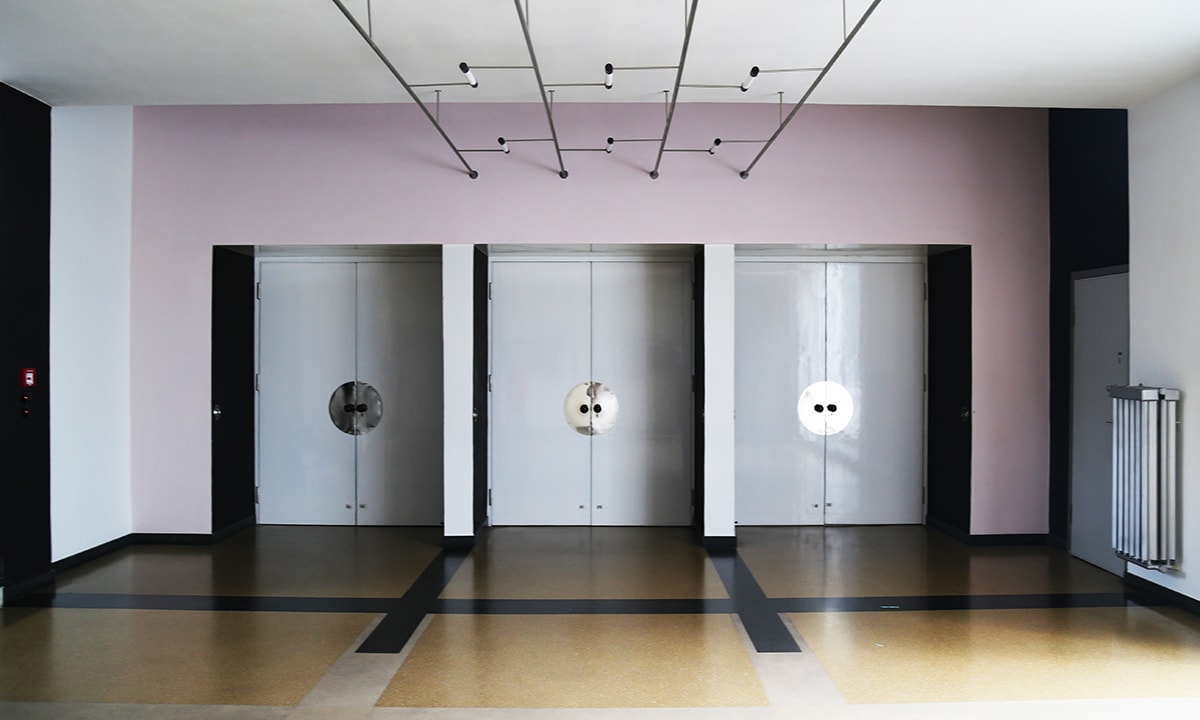
The main lobby of the Bauhaus School shows off the style’s obsession with geometric forms. Photograph by Lee Mindel

With its bold geometric design, the Interaction I rug from Edward Fields grounds a room in modernity. An homage to Porsche’s victory in the 1984 Paris-Dakar Rally, the new Porsche 911 Dakar is a feat of German automotive engineering.
As a student at the Harvard Graduate School of Design, I was always aware of the legacy of Walter Gropius (1883–1969), who was chair of the university’s Graduate School of Design in Architecture from 1938 to 1952. Gropius was known for the innovative use of a new industrial vocabulary in his residential and commercial projects and for the objects he created for them.
Located near Harvard in Lincoln, Massachusetts, the Gropius House incorporates construction materials common to the area— brick, clapboard, fieldstone—but its design is entirely original. Instead of following a prescribed historical “ism,” Gropius created his own, allowing the site and the materials to dictate his plan. Many of the ideas he explored are now familiar tropes of modern design, but the house still seems a marvel of invention.
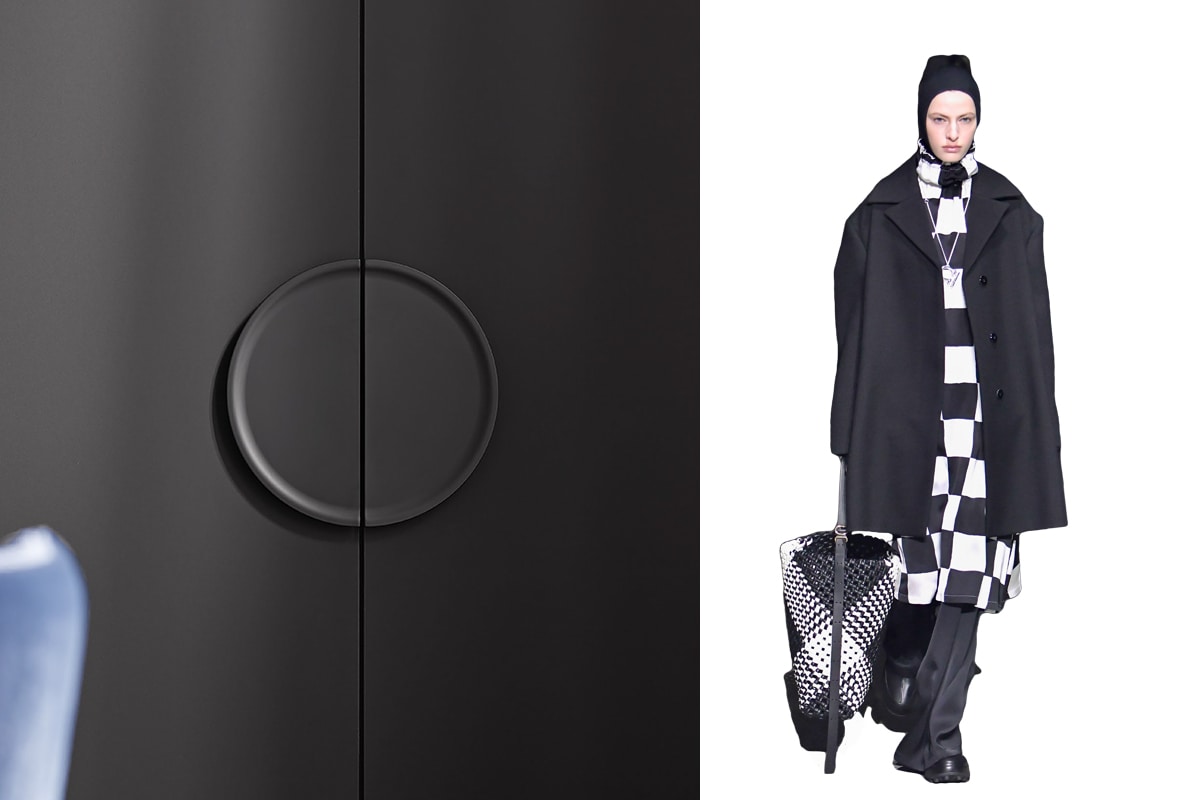
Left: The new statement-making cabinet handles from Nolte Küchen are reminiscent of those in the historic Bauhaus building in Dessau, Germany, designed by Walter Gropius.
Right: Geometric designs dominate in Jil Sander’s Milan runway show for Fall/ Winter 2023.
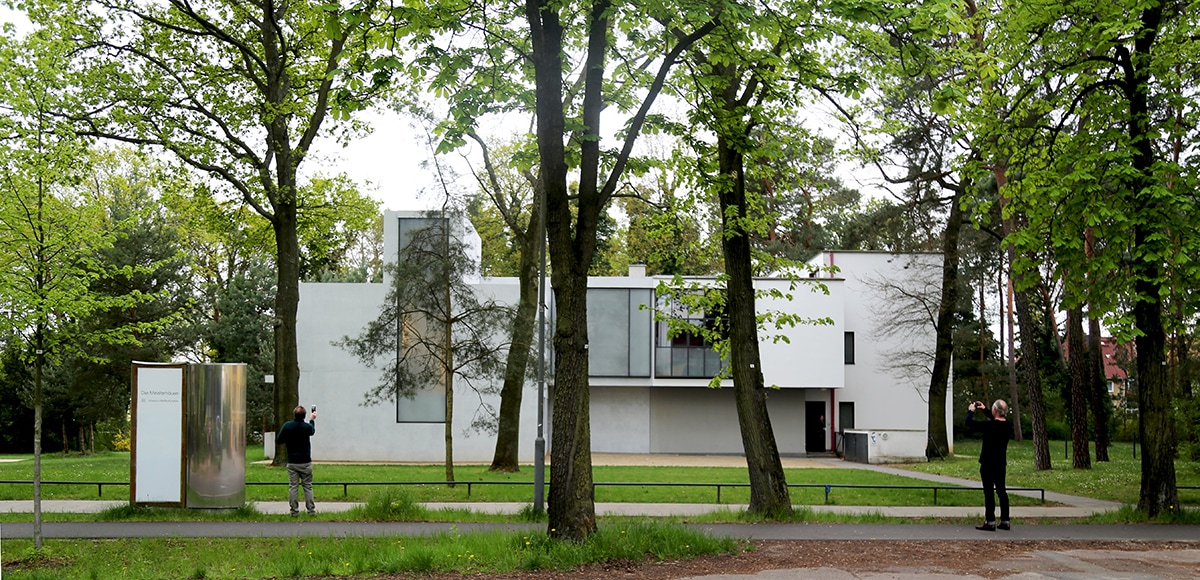
Walter Gropius moved to the United States in 1938, and built this home in Lincoln, Connecticut. Photograph by Lee Mindel

The rear facade of The Bauhaus School, in Dessau. Photograph by Lee Mindel
“Gropius was known for the innovative use of a new industrial vocabulary in his residential and commercial projects.”
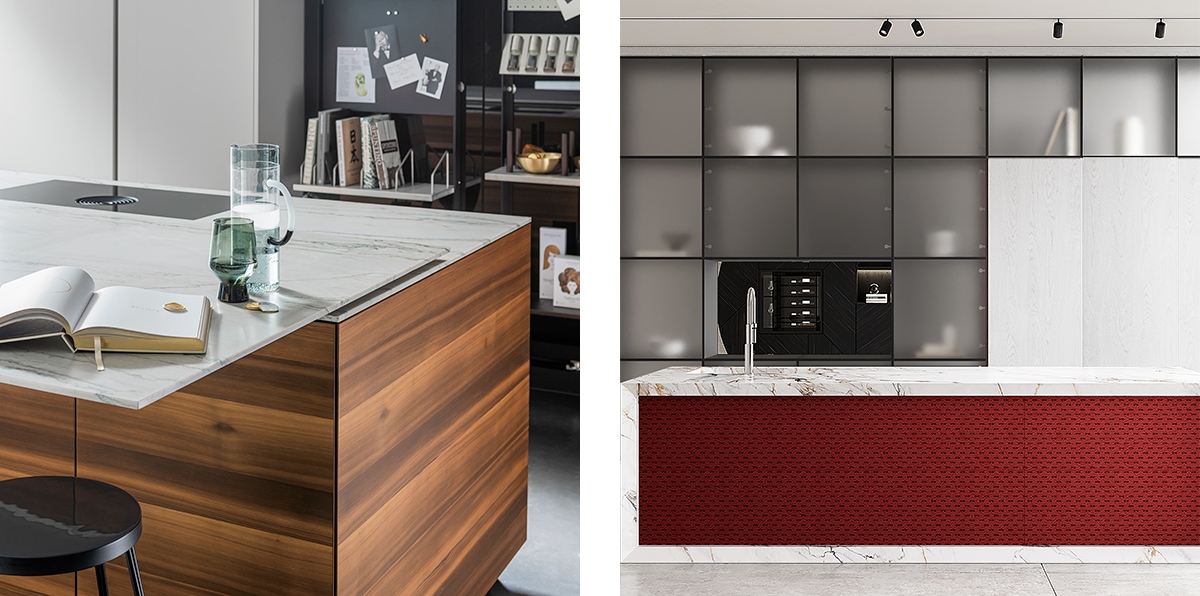
Left: The innovative motion sliding worktop from Eggersmann cleverly conceals and reveals sinks or induction cooktops as it moves effortlessly over the surface.
Right: The most of-the-moment nano technology is at work with the GL45 kitchen by BT45, from BauTeam German Kitchen
Tailors. A dividing cabinetry wall is made up of glass panes that alternate between frosted and clear with the touch of a remote. Designed by Natasha Shtapauk.
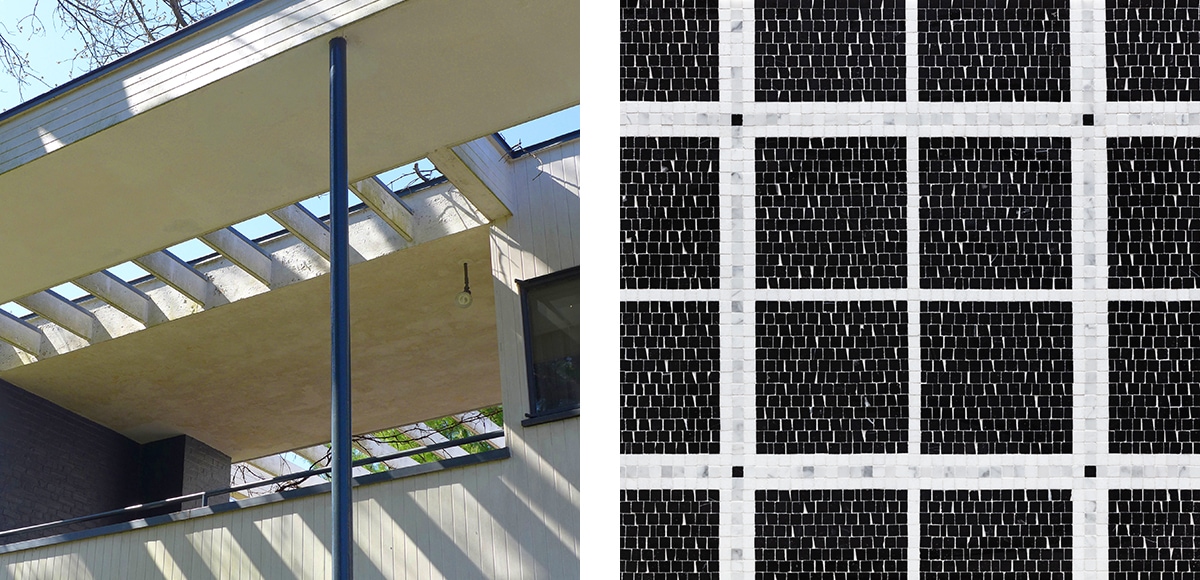
Left: An open grid allows light to pour in to the covered spaces in Walter Gropius’s home in Connecticut. Photograph by Lee Mindel
Right: The Hudson Check Black Mosaic from Artistic Tile is a windowpane plaid made modern in white, grey, and black marble.
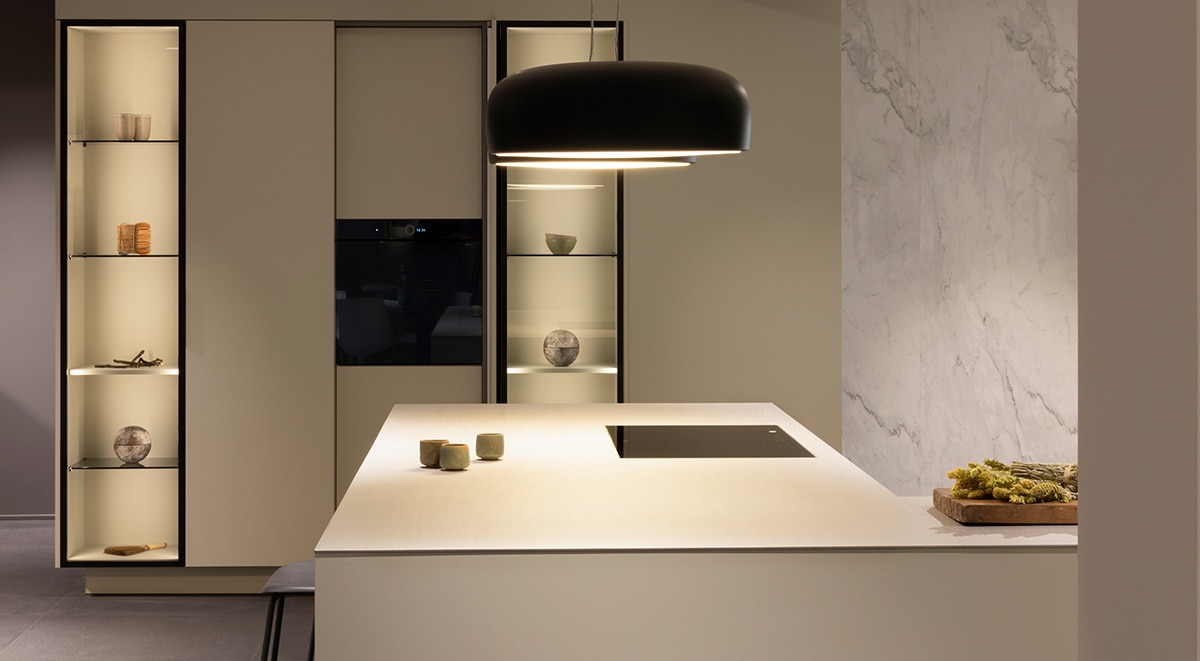
Handle-free cabinet fronts and ultra-thin countertops let the architecture sing in this Poggenpohl kitchen.
“Limitation makes the creative mind inventive.”

Siematic’s new Mondial kitchen speaks a minimalist, modern language—free of traditional ornamentation.
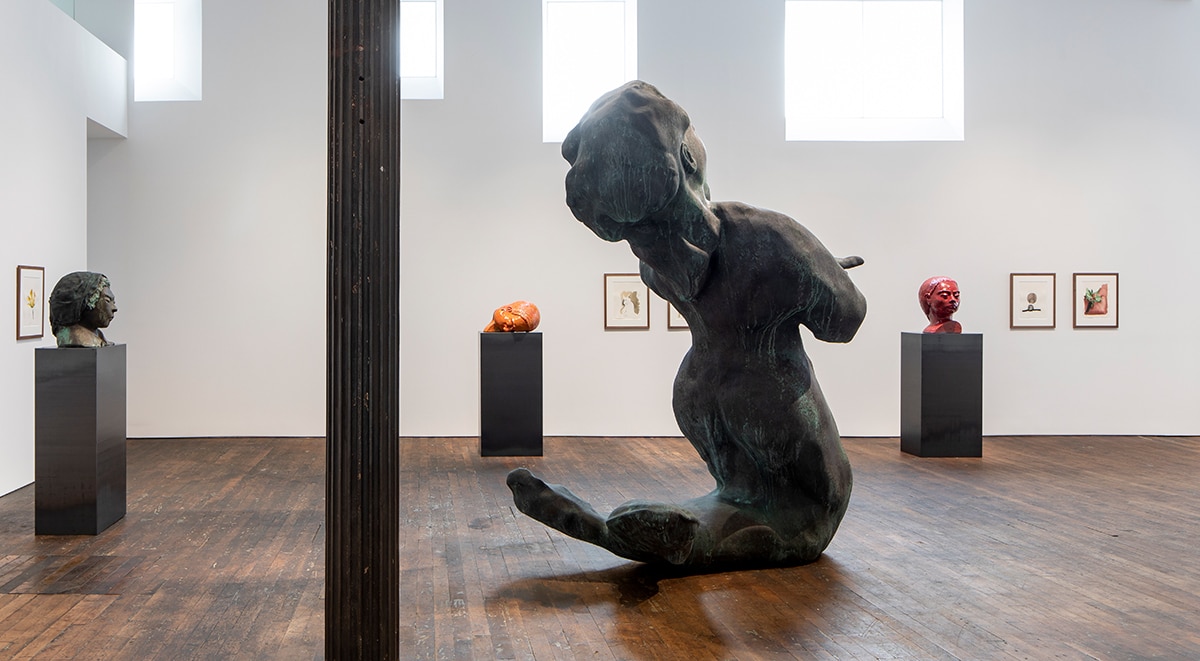
Acclaimed German artist Thomas Schütte’s sixth solo exhibition at Peter Freeman, Inc, featured Nixe (2021) a bronze mermaid sculpture measuring almost ten feet tall, as the show’s centerpiece.
Installation views courtesy of the artist and Peter Freeman, Inc. New York. Photography by Nicholas Knight.
